Kaguya-sama: Love is War is a romantic comedy that I’ve already covered in a few other articles. However, the story deserves a deeper look. Beneath its comedy is a male-aimed romantic message that shows how romantic notions are for men too. Akasaka Aka approaches the romance with using the “slow boil” method as we will explore. The article assumes you’ve watched the anime or read the manga. Spoilers will abound.
He (She) Will Confess First!
Shuchiin Academy houses the nation’s highest performing students from the most elite families. Miyuki Shirogane and Kaguya Shinomiya stand at the apex as the student council president (Miyuki) and the vice president (Kaguya). Miyuki comes from a poor family and through sheer grit achieved his position. His relentless study and work leaves him with messy hair and dark circles under his eyes. His chronic exhaustion and eye-strain produces a permanent glare which intimidates and attracts students in equal measure. Kaguya is the daughter of the wealthiest conglomerate family. She is raised to be the best, leaving her cold and calculating but also innocent and naive. Her innocence and naivete provide some of the story’s jokes. Kaguya, however, has a lot of pressure on her, and so a part of her resents being second to Miyuki. Kaguya acts as the story’s main point-of-view character. While Miyuki’s thoughts are also known to the audience, the story treats Kaguya’s thoughts more seriously, or, at the least, more catastrophically. Miyuki’s thoughts often become jokes or are downplayed against Kaguya’s. This doesn’t diminish Miyuki’s perspective. This technique allows the story to remain mainly in Kaguya’s point of view.
The story centers around Kaguya and Miyuki’s developing feelings for each other and the challenges of growing up. After 6 months of waiting for the other to make the first move, nothing happens, both Kaguya and Miyuki decide to start a love war. Each attempts to trick the other into confessing first. Both believe the first one to confess their emotions for each other becomes subservient to the other. To give your heart leaves you open to being conquered. And they are both too prideful to do that. Both are too driven by their intelligence and drive to achieve to confess first. And so begins the war of love. Kaguya uses her innocence and complicated stratagems to try to trick Miyuki into confessing first. Miyuki uses his on-his-feet thinking abilities to counter her stratagems. Kaguya will plant movie tickets, coupons, and use other ploys that appeal to Miyuki’s cheapskate nature. Miyuki worries about Kaguya rejecting his feelings by looking down on him and saying “How cute.” In the beginning of the story, Miyuki remains sensitive to Kaguya looking down on him, of not measuring up to her standards. As they war against each other, they get to know each other more deeply, learning each other’s foibles and weaknesses. They overlap in similarities, which acts as an initial attraction, but their differences draw them closer together.
The first episode lays the ground work for their war. During the lunch battle, Miyuki brings a lunch from home, which Kaguya wants to try. It’s an inverse of the usual romantic ploy of a girl making a bento lunch for her love interest. Kaguya’s facial expressions and aura, however, makes Miyuki believe she was looking down on him. Kaguya inwardly panics when Chika Fujiwara shares two “indirect kisses” with Miyuki. Chika Fujiwara is the student council’s secretary. She’s so smart she’s an airhead and, contrary to her own assessment, can’t read a room. Chika acts as a wild card in the comedy, an agent of chaos. She eats his rice from the same spot he ate from when he offers her a taste. She then drinks miso soup after him. This prompts Kaguya to silently curse her long-time friend Chika in a fit of frustration. She then contrives to use an expensive, chef-created lunch to woo Miyuki. This plan backfires when Miyuki interprets this as a rich-girl flex. Miyuki had also made another lunch for Chika, which further upsets Kaguya. When Miyuki flees under Kaguya’s gaze, Chika offers Kaguya a bite of what Miyuki made, making Kaguya rescind her envy of her friend. This scene lays one of the frameworks for the jokes and situations that develop. Kaguya schemes (going as far as writing detailed plans), Chika disrupts, Miyuki misunderstands. When Miyuki schemes, Chika still disrupts, and Kaguya misunderstands.
As male characters go, Miyuki understands and fails to understand Kaguya in equal measure. For example, in the second episode, he uses a childhood photo ploy to try to get Kaguya to ask for his phone number. Kaguya responds by crying and accusing Miyuki of being mean, which predictably makes him give in and show her his child photograph. This wrecks his scheme. They are equally matched. This framework proves fertile for jokes and satire. The story loves to poke fun at slice-of-life romance plot points, like mountain vacations, beach episodes, and other tropes. While other stories will follow through with the fantasy scenes, Kaguya-sama pokes at the fantasies and catastrophizing.
So the wheel turns with several vignettes happening in each episode as Miyuki and Kaguya keep guarding themselves and trying to out-maneuver each other. With each joke, the battleground shifts a little. For example, when asked about how to confess one’s love by Tsubasa, a sub-character, and of his own relationship with Kaguya, Miyuki states he expects Kaguya hates him. Little reveals like this add up over each vignette and episode. While these character reveals hide in the jokes, the romantic plot marches forward despite the appearance of backsliding.
One critical scene has Kaguya walking to school, but she gets lost and distracted. She encounters Miyuki, who is also late, and they ride together on his bike. This scene shows Kaguya’s character when she walks an elementary school girl to school. The girl underlines Kaguya’s own loneliness and desire for a normal life for a moment before she recovers her composure. The scene plays on a romance trope, one stripped of jokes, when she rides with Miyuki to make it to school on time. She also sees Miyuki’s intensity in a different light.
One of the other early turning points happens when Kaguya becomes sick. Her childhood friend and personal assistant Ai arranges for Miyuki to visit Kaguya. Ai wants to shove the two together and end the, from her perspective, frustrating and pointless love war. She grows tired of Kaguya girl-gushing but never acting. Scheming isn’t acting. When Kaguya becomes sick, she loses all her inhibitions (but not her innocence, which is key to this joke and conflict). In other words, she gets cuddly. Ai tricks Miyuki into visiting Kaguya’s bedroom and locks them in together. Kaguya in her cuddliness pulls him into bed. Miyuki freezes and tries to escape but he, suffering from chronic insomnia as he does, promptly falls asleep. Kaguya awakes to find Miyuki. She accuses him and shoves him out of the bed. Kaguya becomes angry with him for both not doing anything and for possibly doing something. She is angry with herself for her contradiction. Miyuki, on the other hand, becomes upset because she is angry with him when he believes his self-control should be rewarded. The situation is the first truly open emotional exchange toward each other, marking a significant advancement. This sets the stage for Kaguya crying in front of Miyuki in episode 12 when she misses the summer fireworks festival. In turn, Miyuki and gang contrive to rush her to the next city’s fireworks show. While they make it in time, Kaguya’s gaze remains locked on Miyuki. These instances shift the tone of the story. Jokes still fire (such as Miyuki cringing over what he said during the fireworks episode), but the romantic elements dominate more of the run time. Eventually this leads to them confessing to each other. From there, the focus shifts to deepening their relationship and the obstacles they face. They learn confessing is only the beginning.
Chika, Ai, the student council treasurer Yu, and later Miko play vital roles in the flywheel of love. Each stand as developed characters in their own right, and each have their own character arcs. Chika remains the most stable character, which is an interesting contrast to her chaotic role in the story. Ai struggles with her friendship and duties to Kaguya which sometimes conflict with each other. Kaguya often takes her for granted, and Ai is well aware of their differing social status. She wants a regular life, and eventually becomes friends with Miyuki. Yu is a truant until Miyuki recognizes him. He keeps to himself and uses headphones to shut out the world, but he observes people well and notices what they try to hide. Pointing those things out is a source for many jokes. Yu becomes a recluse after he gets suspended for trying to protect a classmate from her abusive boyfriend. He also gets shunned for his effort. Over his arc, Yu opens and even joins a cheer squad. He doesn’t lose his introvert nature. He balances. When Yu falls for the vice captain of the cheer squad, Tsubame, his own romance arc starts. Only his arc has more heartbreak and difficulty. Eventually, Yu and Miko, the disciplinary representative, develop romantic feelings for each other and their own war of love.
Even the narrator has his own personality and jokes. In the English dub, Ian Sinclair’s delivery sells many of the jokes. The narrator’s adult exasperation counterbalances the teen ridiculousness. His unhinged dialogue counterbalances the more serious moments. The narrator provides context and breaks the 4th wall.
As the main character, Kaguya’s complexity and conflicting emotions are clear to the audience. A courtroom scene metaphor shows how she castigates and fights against herself, almost as if she has multiple personalities (she doesn’t). Most of all, she wants to share her weaknesses and inner ugliness with Miyuki and for him to do the same. In the end, her icy side drives her to confess her love to him and to confess her desire for this deep connection. Miyuki remains troubled by his inability to measure up, but he already measures up in Kaguya’s perspective. This also influences her decision to end the love war. Most of all, she wants a regular romance, a love story grounded in small gestures and small moments.
The end of the manga becomes quite over-the-top as it doubles down on the folktale which inspires the story. Kaguya becomes a pawn in her brothers’ power jockeying when their father’s health declines. Kaguya breaks up with Miyuki who is paid off by the family, giving him a war chest to go after Kaguya. Kaguya’s eldest brother arranges for her to marry into the rising side-branch of the family, which would consolidate their economic and political power. Miyuki and gang work with Kaguya’s less-powerful brother to break the power-battle and free Kaguya so she could become her own person. While more serious, the final part of the arc’s over-the-top scenes keeps with the established humor.
Each of the side characters could develop and star a story of their own. The characters entangle with each other. Miyuki and Chika, for example, have continual teaching situations. Chika teaches Miyuki where he’s deficient, like sports and singing. Chika soon regrets doing so, even though Miyuki pushes himself relentlessly to learn. The vignette format keeps the pace of each episode tight and allows the story to cover these side characters without losing the main plot as anime side-stories can sometimes do.
The Loving Ground
Kaguya-sama: Love is War approaches romance using a “slow boil” method. The story begins with a high level of comedy and a low level of romance. As the story progresses, the comedy level dials back and the romance scenes dial up. By then, the target audience has invested into the story. Kaguya-sama despite taking Kaguya’s point of view most of the time, targets young men. The manga is a seinen, after all. Romance stories normally make men uncomfortable, but anime and manga have increasingly been releasing romance stories targeting men. Most of these stories teem with fan service and the male gaze. The protagonist acts as a blank canvas for the audience to project onto. My Dress-Up Darling‘s protagonist, Wakana Gojo, has a few characteristics to his personality. He likes Hina dolls and works hard, but he leaves a lot of room for audience projection, especially when the camera shifts to his eyes and focuses on Marin. My Dress-Up Darling focuses on sexiness with a peppering of romance. Other stories like Komi Can’t Communicate satirized this audience projection habit with Tadano. The story plays with him as the projection character, marking him as average in every way possible. Komi’s comedy makes the romantic elements easier to accept. Projection characters allow the watcher to vicariously enjoy the romance or sexuality, most often in a wish fulfillment context. Most male-targeted romances have girls fawn over the protagonist. To be fair, female-targeted romances do the same thing with the guys fawning and resisting the female protagonist. This acts as a romantic version of fantasy plot-armor, the idea that the protagonist is immune to death (but not difficulty) by the virtue of being the main character of the story. Projection protagonists trap the writer because they can’t push difficulties too hard onto the protagonist. This would lead to character development which would push the protagonist away from the audience. This is one reason why projection protagonist stories follow common story beats. When the protagonist has little personality and wish fulfillment remains paramount, there’s only so much a writer can do. Without a strong protagonist, the female characters lack a male to interact with. Most wish fulfillment romances avoid having other male characters which could threaten the audience. This leaves the female characters to conflict with each other, and so we end up with the tropes we have. Basically, the female characters act catty to each other over the protagonist.
Kaguya-sama doesn’t have a projection character. And the story avoids the cattiness beats. Even the narrator has a personality! In the beginning, Kaguya appears to be a twin of Miyuki, who appears to be the projection protagonist. But the story pushes these characters apart and lays the groundwork for subverting the usual romantic tropes. Miyuki develops too much of a personality for projection. We glimpse just enough of his internal dialogue to get an idea of his thinking. We sit firmly in Kaguya’s head and perspective most of the time. Romance elements grow until they dominate. Whereas with Komi, comedy continues to dominate as the story inches forward. Kaguya digs deep into romantic situations with a comedic vignette afterward for breathing space. The structure is ingenious. Men, unfortunately, aren’t supposed to like romances or, at the least, admit to that like. The increase in male-targeting romances arrives at a good time. Men have disconnected from the softer side of masculinity. While most anime and manga romances key to the male sexual gaze, these stories still introduce the softer side of masculinity. They show it is okay for men to like to cuddle (and just cuddle, without sexual advances) and, most importantly, open to their emotions. Miyuki and Kaguya through the first part of their romance arc struggle with this. Opening your heart to others is frightening; it takes great courage. Romance takes courage, and courage stands as one of the traditional qualities of manhood. Courage often appears in Kaguya-sama. Although their pride keeps Miyuki and Kaguya at war, they also lack courage, courage to open up to each other. And when they do, they become awkward and second guess their own behavior.
The Influence of Folklore
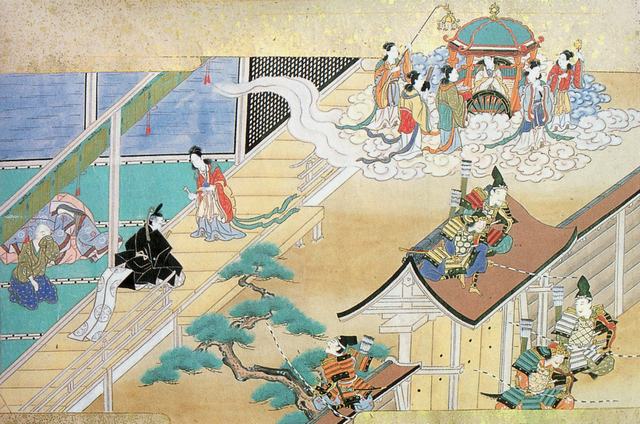
In an interview, Akasaka Aka speaks of how The Tale of the Bamboo Cutter inspired elements of Kaguya-sama. Quickly, The Tale of the Bamboo Cutter has an old bamboo cutter finding the moon child, Princess Kaguya, in a stalk of bamboo. She grows into a beautiful woman and attracts many suitors. She sends each on an impossible quest to win her love, knowing that she will eventually be summoned back to the moon. The Japanese emperor soon falls for her. She also falls for him. However, when the moon people demand her return, not even the emperor could stop it. She gives him an elixir of immortality which he burns on top of Mount Fuji as an offering to her. In later stories, she would return centuries later and learns he failed to drink the elixir and wait for her to come back to him.
Kaguya, just like her folklore inspiration, presents trials and challenges for Miyuki to overcome or avoid. Miyuki’s name comes from Otomo no Miyuki, who Princess Kaguya charges to retrieve a legendary gemstone from a dragon’s head. The folktale’s various suitors act as inspiration for the male characters.During Miyuki’s rescue of Kaguya from the political ploys of her family, he rents a helicopter and pilot, allowing him to swoop in and fly her away. This scene acts as an inverse of the folktale. Kaguya’s family use her as an political and economic tool just as in the folktale with the suitors. However, instead of falling in love with the emperor and then being flown away by the Moon People to a resplendent life on the moon, Kaguya is pulled away by Miyuki and toward a normal life. The finale is a clever twist on the folktale.
Akasaka Aka uses this general framework to build his own romantic satire. Speaking of frameworks, he relies on a formula for the situations in the story. Chika establishes the scenario. Kaguya and Miyuki argue and build tension. Yu punches through with logic, and Miko concludes the story. The formula, however, proves flexible.
Throughout the story, thanks to Miyuki’s interest in astronomy, nods to The Tale of the Bamboo Cutter appear. Miyuki loves the moon and stars, gushing over them to Kaguya, which not only develops his character but, for the audience in the know, becomes a gush for his love for Kaguya as the “moon child.” During a scene, Miyuki even states he would’ve taken the elixir and waited for Kaguya however long it was necessary.
Kaguya-sama Will Be a Classic
Kaguya-sama:Love is War stands to become a classic. The story’s slow boil and vignette format keeps the pace quick while developing toward weightier romantic themes. The story has a memorable cast that taps into emotional struggles everyone faces at some point. Kaguya is a likeable but also dark character who makes for an interesting point of view character. This avoids the problem of the projection protagonist. The animation is also fun and will stand up well as anime styles change. The story points to how male-targeted romantic comedy can work without needing to rely on the crutch of fan service and without tiptoeing around romance. The story points toward the courage romance requires. The balance between seriousness and comedy works well. The comedy allows the serious parts of the story to pop out. Kaguya-sama: Love is War captures timeless emotions and challenges common to the human experience. While some jokes will age out thanks to their time-period dependent references, most of the comedy centers on timeless emotions and challenges. But pinning the story to a classic folktale and offering a happy ending will help Kaguya-sama: Love is War resonate with many.
References
Aka Akasaka (2020). “Wielding emotions to create a story: “Kaguya-sama Wants to Be Confessed To” author Aka Akasaka shares his strategy for writing manga”. Guya.moe (Interview). Interviewed by Daisuke Okamoto.
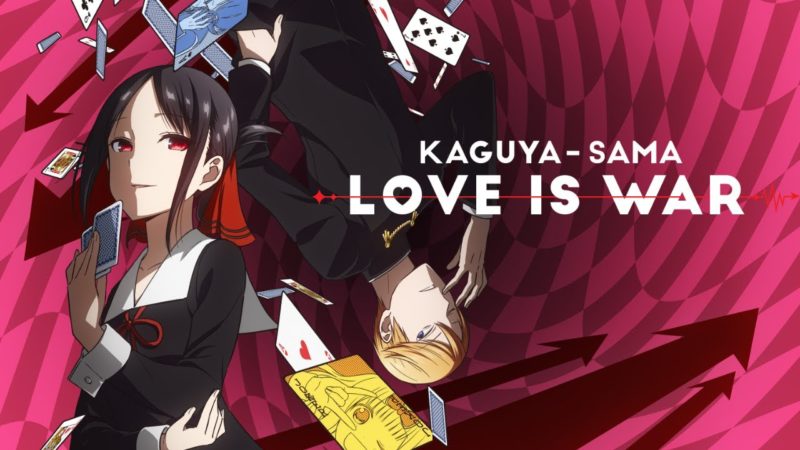
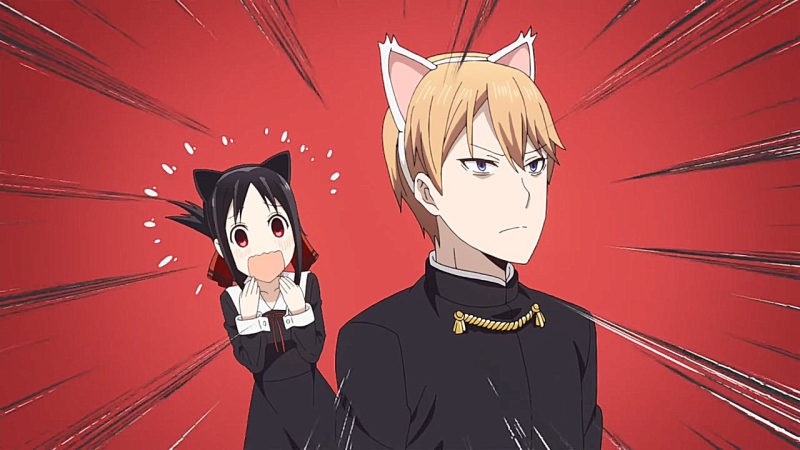
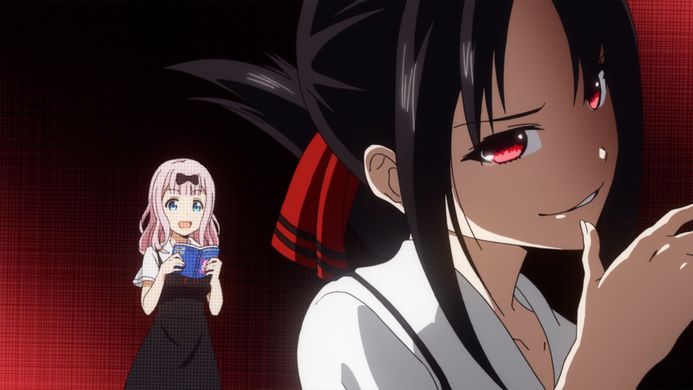
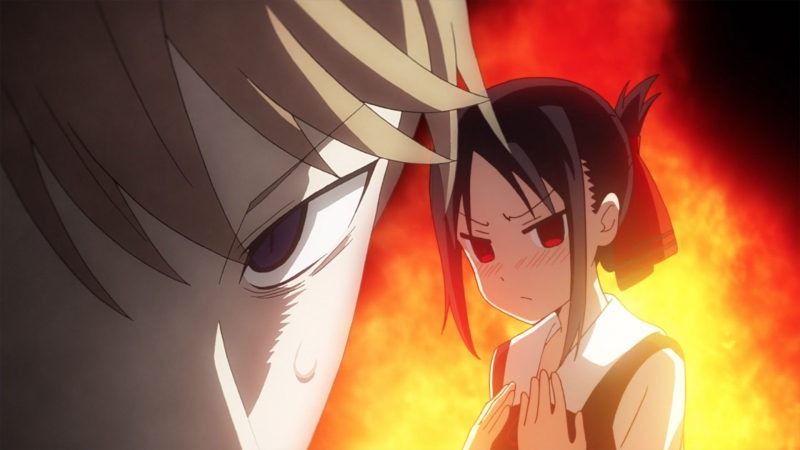
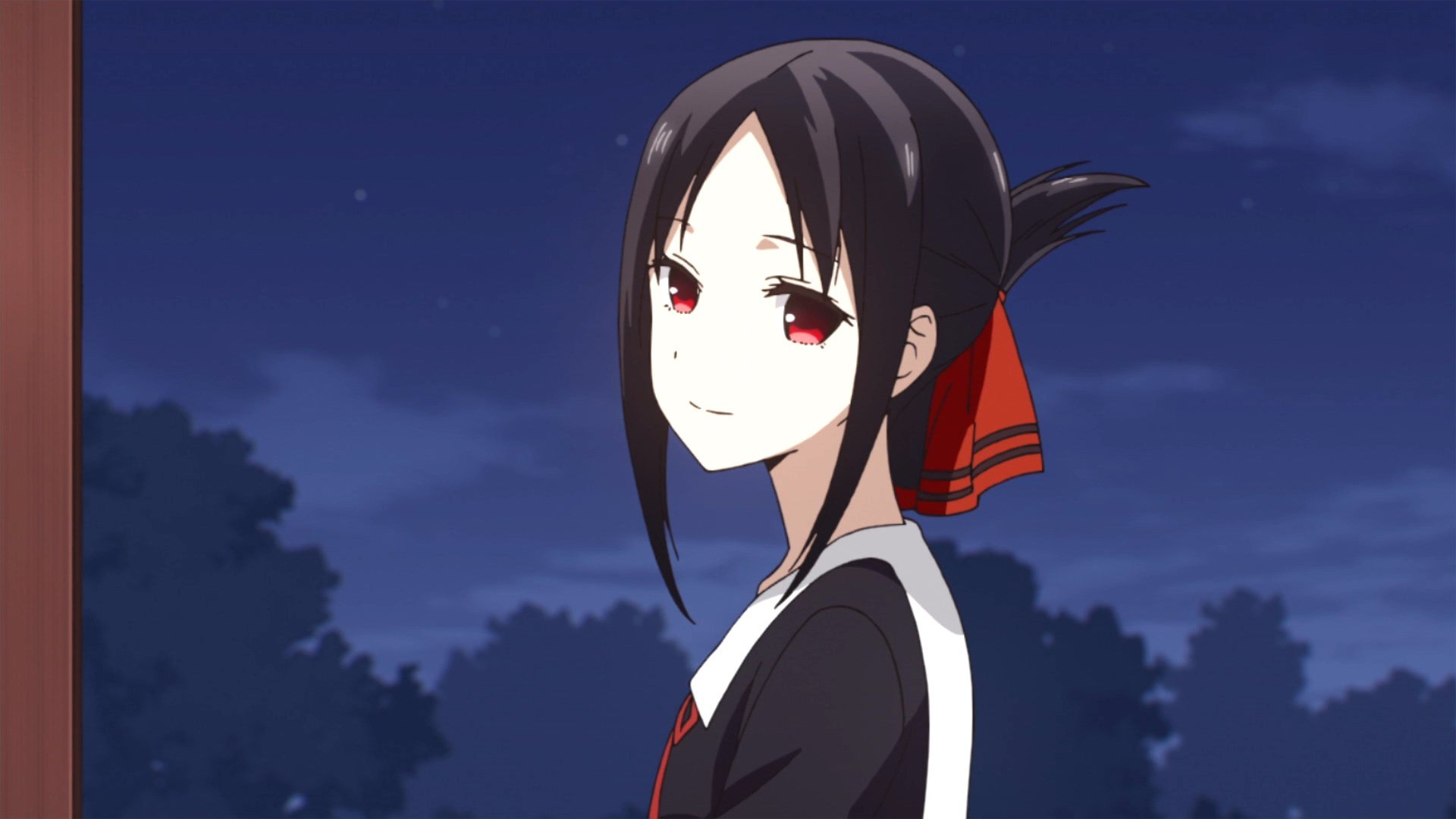
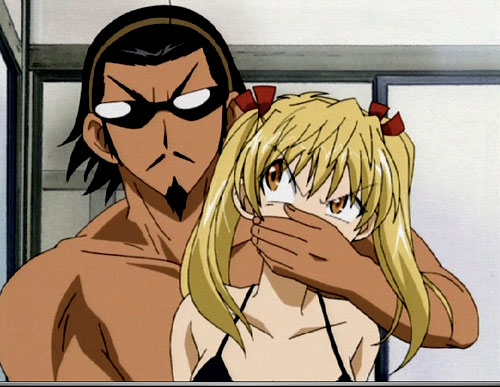
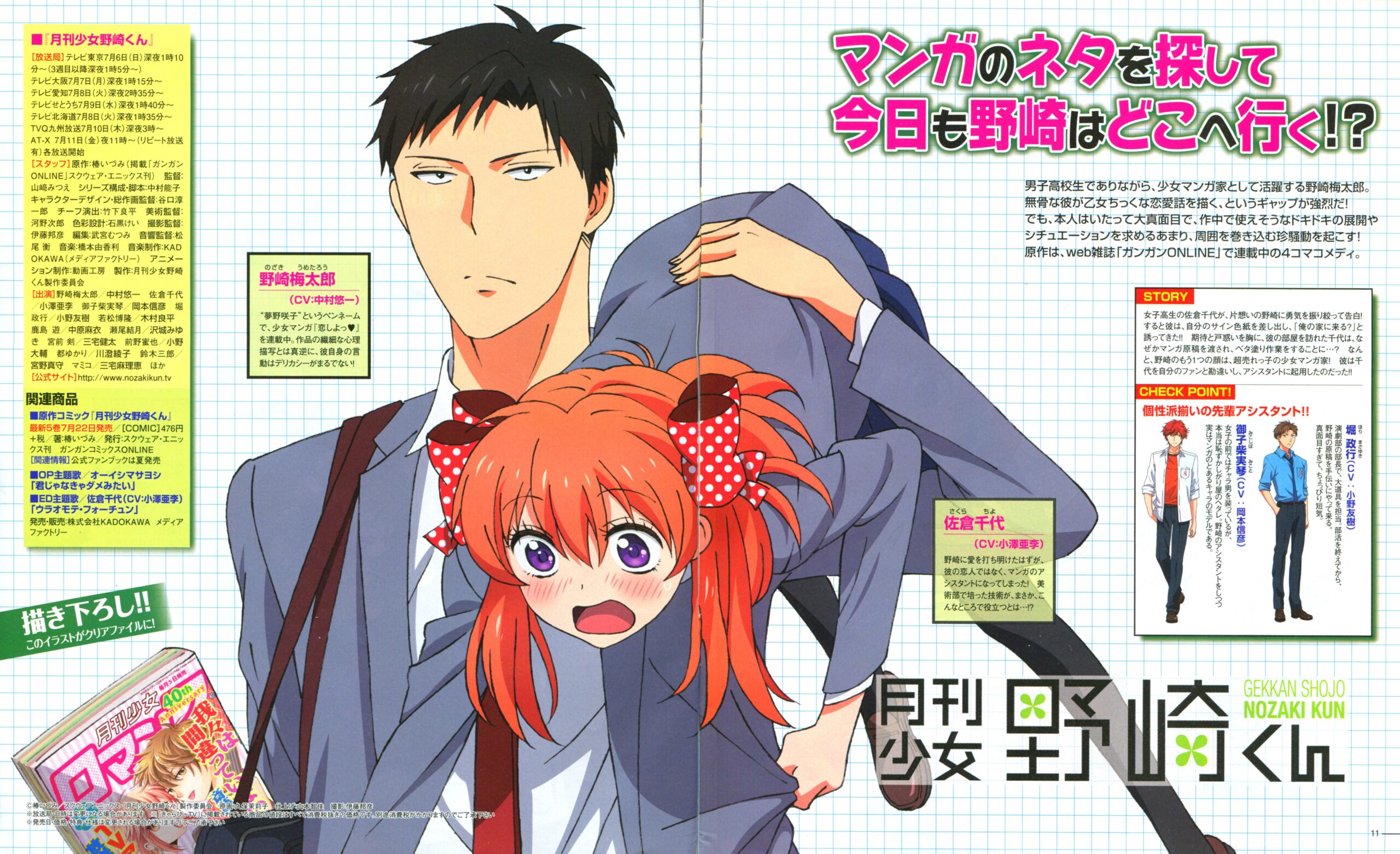
Watched the whole show based on your earlier article and loved it! I very rarely watch series longer than 2 seasons, but this one was worthwhile (and, well, just 3 seasons).
I got the manga, but don’t have time to read it. Only recently found the time to finish “Interview with Monster Girls” series and manga based on another of your articles, also loved them, though the manga, in my opinion, tends to drag in some later chapters.
I’m glad you enjoyed it! The manga has some fun small scenarios which were cut from the anime. With longer-run series, I tend to wait until they’re finished. Which means by the time I get to them, interest in articles about those titles have waned, but that’s fine. For super-long series, like Naruto, this lets me get filler-episode lists and then skip the filler. Sacrilegious to fans, I know, but my time is limited.
Ian Sinclair is the best character in the show.
He is! His delivery made many of the jokes.